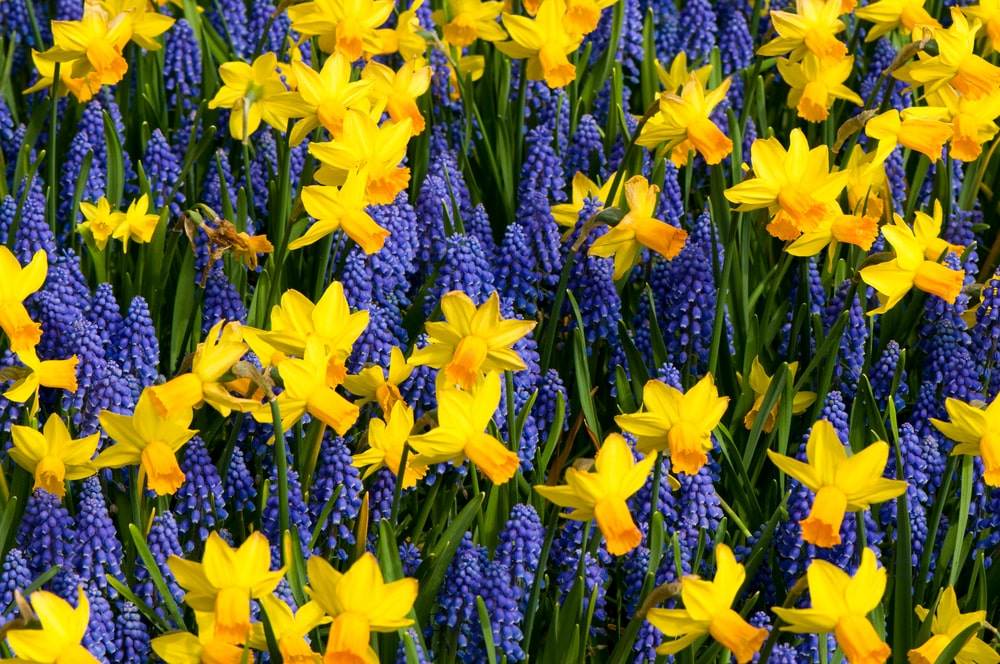We’ve got a great assortment of spring-blooming bulbs, so here is what you need to know:
Planting Bulbs by the Numbers
- October is a good time for planting most bulbs. The exception is tulips, which should be planted in November—they like to be planted in cooler soil. To store them until time to plant, keep them in a paper (never plastic) bag at average room temperature. You do not need to chill.
- All spring-blooming bulbs prefer well-draining soil. If you have heavy red clay, then mix in a little compost to loosen it up.
- Spring-blooming bulbs go dormant in the summer and don’t like wet feet, so you’ll have the best results if you don’t plant them where you put thirsty plants that need a lot of water during summer.
- Yes, there are bulbs that will take some shade. Most of the earliest bloomers are great in areas under trees that lose their leaves over the winter because they’ll get all that early spring sun before the trees leaf out. Look for crocus, eranthis (winter aconite), galanthus (snowdrops), and dwarf iris. Other bulbs that will take part shade: Muscari, narcissus (daffodils/jonquils), bluebells (wood hyacinths), and Starflowers (Ipheion).
- How deep do you plant? Smaller bulbs like crocus, muscari, bluebells, etc. can go four inches deep; daffodils and hyacinths go six inches deep.
What About Tulips?
What about tulips? Ah, here’s where we need to remember that tulips have a few challenges—first, they’re edible—deer and squirrels WILL eat them. Tulips also don’t like our hot summers. So what do we do? I’ve got the answers!
Plant tulips DEEP—10 to 12 inches. Yeah, that’s deep—but squirrels don’t dig that far down AND voles also tend to tunnel in the top six inches so they’ll usually miss them, too.
Plant a Bouquet
An added advantage to going deep is that once you plant the tulips, you can cover them over to the six-inch depth and plant daffodils or hyacinths in that layer. You can even cover the daffodils or hyacinths and tuck in a few crocus or muscari right on top. The tulips will come right on up between the other bulbs without a hitch!
This gives you a bouquet right in one hole—and with those nice NON-edible daffodils and/or hyacinths mixed in with those tulips, the deer will usually skip right over them.
What to Do Now
Come in now while the selection is great and let me help you fill your garden with beautiful spring color.

